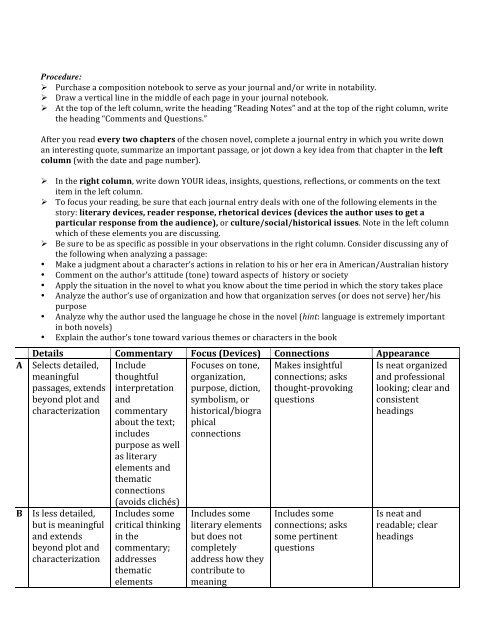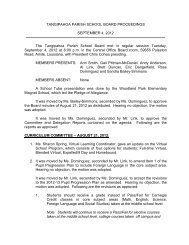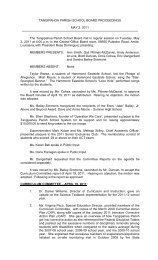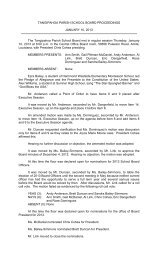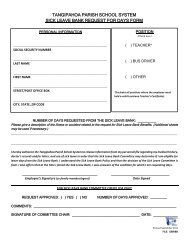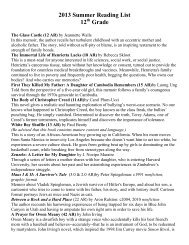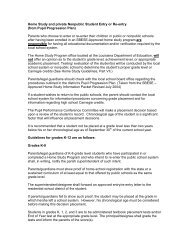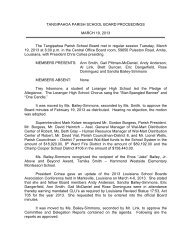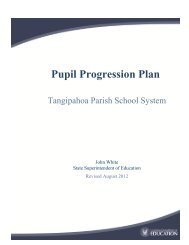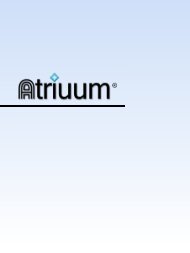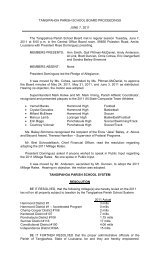PDP English I Summer Reading
PDP English I Summer Reading
PDP English I Summer Reading
Create successful ePaper yourself
Turn your PDF publications into a flip-book with our unique Google optimized e-Paper software.
Procedure: Purchase a composition notebook to serve as your journal and/or write in notability. Draw a vertical line in the middle of each page in your journal notebook. At the top of the left column, write the heading “<strong>Reading</strong> Notes” and at the top of the right column, write the heading “Comments and Questions.” After you read every two chapters of the chosen novel, complete a journal entry in which you write down an interesting quote, summarize an important passage, or jot down a key idea from that chapter in the left column (with the date and page number). A B In the right column, write down YOUR ideas, insights, questions, reflections, or comments on the text item in the left column. To focus your reading, be sure that each journal entry deals with one of the following elements in the story: literary devices, reader response, rhetorical devices (devices the author uses to get a particular response from the audience), or culture/social/historical issues. Note in the left column which of these elements you are discussing. Be sure to be as specific as possible in your observations in the right column. Consider discussing any of the following when analyzing a passage: • Make a judgment about a character’s actions in relation to his or her era in American/Australian history • Comment on the author’s attitude (tone) toward aspects of history or society • Apply the situation in the novel to what you know about the time period in which the story takes place • Analyze the author’s use of organization and how that organization serves (or does not serve) her/his purpose • Analyze why the author used the language he chose in the novel (hint: language is extremely important in both novels) • Explain the author’s tone toward various themes or characters in the book Details Commentary Focus (Devices) Connections Appearance Selects detailed, Makes insightful meaningful connections; asks passages, extends thought-‐provoking beyond plot and questions characterization Is less detailed, but is meaningful and extends beyond plot and characterization Include thoughtful interpretation and commentary about the text; includes purpose as well as literary elements and thematic connections (avoids clichés) Includes some critical thinking in the commentary; addresses thematic elements Focuses on tone, organization, purpose, diction, symbolism, or historical/biographical connections Includes some literary elements but does not completely address how they contribute to meaning Includes some connections; asks some pertinent questions Is neat organized and professional looking; clear and consistent headings Is neat and readable; clear headings


